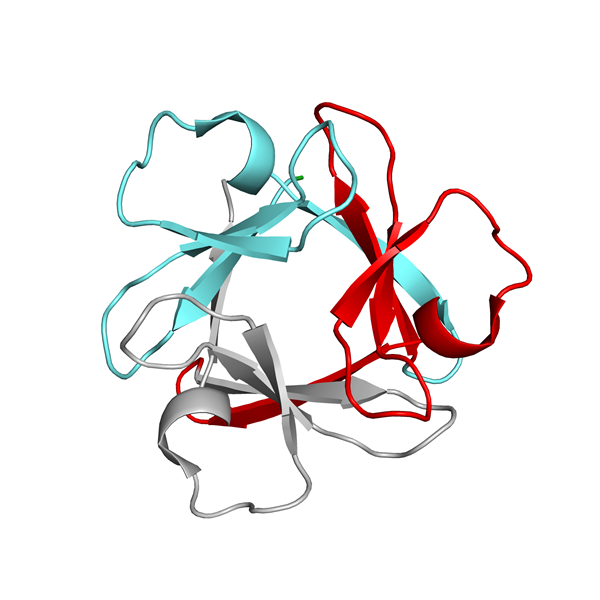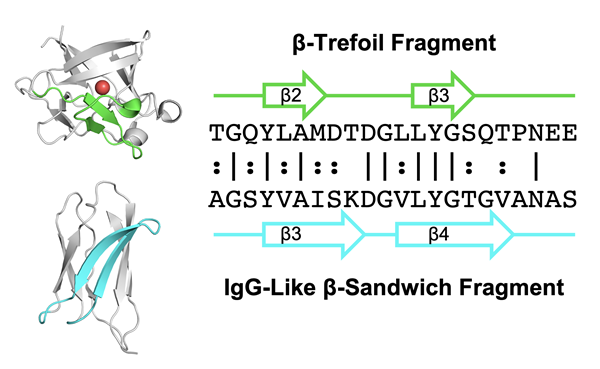Proteins are biological polymers that perform many essential functions for life. Thousands of different protein types exist, but we do not know where they came from. Writing in PLOS Computational Biology, Longo et al. addressed the mystery of emergence for a family of proteins called β-trefoils. After comparing the sequence of every known β-trefoil protein to the rest of the “protein universe,” the researchers arrived at a surprising conclusion: β-trefoils are made up of pieces taken from a different protein family. In other words, nature built something new using the elements it had at hand – not unlike Dr. Frankenstein himself!

Proteins are an essential class of biomolecule that mediate virtually all cellular functions. At present, over 2,500 different families of proteins are known, suggesting that the emergence of new protein families has happened many times throughout the history of life. Nevertheless, understanding how new protein families are born is a daunting challenge to biologists. To address this question, Dr. Liam Longo and Prof. Shawn McGlynn at ELSI teamed up with Prof. Rachel Kolodny at the University of Haifa in Israel. Together they hunted for the origins of one of nature’s most beautiful forms, the β-trefoil.
β-trefoils have an elegant structure defined by a threefold axis of symmetry (Figure 1) and, since their discovery, the origin of the β-trefoil family of proteins has been a mystery. The reason is that β-trefoils have unique sequences patterns that are not observed in other protein families. This fact has led some scientists to conclude that β-trefoils emerged de novo.

To test a de novo hypothesis, the researchers performed millions of sequence comparisons – in effect, looking everywhere for hints as to where β-trefoils may have come from. Although most protein families showed no similarity to the β-trefoil, there were some notable exceptions, namely a protein family called the IgG-like β-sandwich (Figure 2). While the β-trefoil is a relatively young protein family, IgG-like β-sandwich is almost as old as life on earth, dating back all the way to the last universal common ancestor (LUCA). On the basis of these results, the researchers hypothesized that the young β-trefoil was stitched together from the parts of an old IgG-like β-sandwich – not unlike Frankenstein’s monster.
The idea of Frankenstein proteins is not as silly as it sounds: Prof. Kolodny’s previous research has shown that many proteins contain pieces taken from other families. It seems that nature prefers to reuse and repurpose the pieces and parts that it has on hand rather than invent something entirely new. The β-trefoil family, in particular, is special because it shows how the pieces of one protein family can give rise to a new protein family with a completely different shape.
So, if the IgG-like β-sandwich gave rise to the β-trefoil, then where did the IgG-like β-sandwich come from? It’s a great question – better get back to work!
| Journal | PLOS Computational Biology |
| Tile of the paper | Evidence for the emergence of β-trefoils by ‘Peptide Budding’ from an IgG-like β-Sandwich |
| Authors | Liam M. Longo1,2, Rachel Kolodny3, Shawn E. McGlynn1,2 |
| Affiliations | 1. Earth-Life Science Institute, Tokyo Institute of Technology, Tokyo, Japan 2. Blue Marble Space Institute of Science, Seattle, Washington, United States of America 3. Department of Computer Science, University of Haifa, Haifa, Israel |
| DOI | 10.1371/journal.pcbi.1009833 |
| Online published date | February 14, 2022 |
